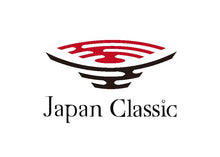【Japanese Pottery】Anagama Kiln (穴窯): Japan’s Ancient Single‑Chamber Kiln and Its Unique Firing Effects
About the Author
Hayato Eihara
I am a Japanese resident living in Japan!
With years of experience, I share in-depth and detailed information about Japan with the world.
As part of my mission to promote Japanese culture, I also run Japan Classic, an online shop specializing in unique, high-quality tableware. If you're interested, feel free to check it out!
Table of Contents
- 1. The Kiln with Japan’s Oldest History
- 2. Pit Kiln (Anagama / 窖窯), 5th Century–Present: Horizontal Flame Style (Semi‑Inverted Flame Style)
- 3. Pit Kiln Features: Comparison with Noborigama
1. The Kiln with Japan’s Oldest History
The first kiln appeared in Japan during the Kofun Period (古墳時代) as a pit kiln (穴窯) used to fire Sue ware (須恵器). Whereas earlier earthenware was hand‑shaped without a potter’s wheel (ロクロ) and open‑fired, Sue ware was formed on a foot‑powered kick wheel (蹴ロクロ) and fired in a kiln — representing the most advanced ceramic technology of its time. These innovations are believed to have been introduced from the Chinese mainland and the Korean Peninsula.
2. Pit Kiln (Anagama / 窖窯), 5th Century–Present: Horizontal Flame Style (Semi‑Inverted Flame Style)
Pit kilns divide into two types:
・Fully underground pit kiln (完全地下式穴窯)
・Semi‑subterranean pit kiln (半地上式穴窯/半地下式)
Fully underground pit kilns are the earliest form introduced to Japan, enclosing flame heat underground to achieve higher firing temperatures than open firing. However, excessive ground moisture can prevent adequate heating, and collapsed kilns require immense labor to rebuild or relocation.
Semi‑subterranean pit kilns are built into natural slopes with a dome‑shaped roof leading to a chimney. Easier to maintain and more fuel‑efficient than fully underground kilns, their single‑chamber design challenges temperature control and heat retention but produces uniquely expressive ceramics. Some contemporary artists still use this kiln style.
Key kiln features (not present in all kilns):
・ロストル (secondary‑air intake opening)
・捨て間 (stoke chamber between firing chamber and chimney that temporarily holds flame heat to improve insulation)
・ダンパー/空気調整穴 (gate or hole for controlling airflow)
Viewed from above, the semi‑subterranean kiln chamber typically resembles a teardrop shape. From the firebox (焚口), the chamber opens into the firing area (焼成室) before narrowing through the stoke chamber toward the chimney. A smoke‑splitting column (分煙柱)—if present—diverts flames laterally to distribute heat evenly and ensure uniform firing across the chamber walls.
3. Pit Kiln Features: Comparison with Noborigama
The firing efficiency of pit kilns (穴窯) is often compared with that of noborigama (登窯). Although each kiln differs in scale, purpose, and intended aesthetic—making direct comparison of limited value—it can serve as a useful reference.
Because noborigama are multi‑chambered (連房式), they are more fuel‑efficient than single‑chamber pit kilns. One potter reports that using the same amount of wood, a noborigama can fire over six times as many pieces as a pit kiln.
Whereas a noborigama firing typically takes one to two days, a pit kiln firing generally spans four to six days. Noborigama allow loading large quantities of work and produce varied atmospheres in each chamber. In contrast, pit kilns fire fewer pieces with a focused aesthetic intent.
Furthermore, noborigama operators extinguish the fire once an acceptable finish is achieved for the entire load. Pit kiln firings, however, continue until the potter attains the desired result for individual pieces—sometimes extending beyond ten days under certain conditions, consuming far more fuel per piece than noborigama.
Temperature control is also easier in noborigama: their larger volume buffers against external air entering the firebox, whereas pit kilns’ single chamber is directly affected, increasing the risk of uneven firing.
Despite these disadvantages, pit kilns excel in producing richly ash‑covered surfaces and dramatic kiln effects (窯変) that more than compensate for their inefficiencies. Like noborigama, no two firings yield identical results, but pit kilns amplify both spectacular successes and potential failures.
Even glazed work fired in pit kilns benefits from unique oxidation–reduction atmospheres and variable flame intensity, creating character far beyond what electric or gas kilns can achieve. While electric and gas kilns outperform pit kilns in consistency, ease of operation, and cost efficiency, pit kilns remain unrivaled for artists prioritizing individuality and expressive depth in their ceramics.
Brighten Up Your Table.
We deliver vibrant, high-quality pieces directly from Japan to add color and elegance to your dining experience.







Leave a comment